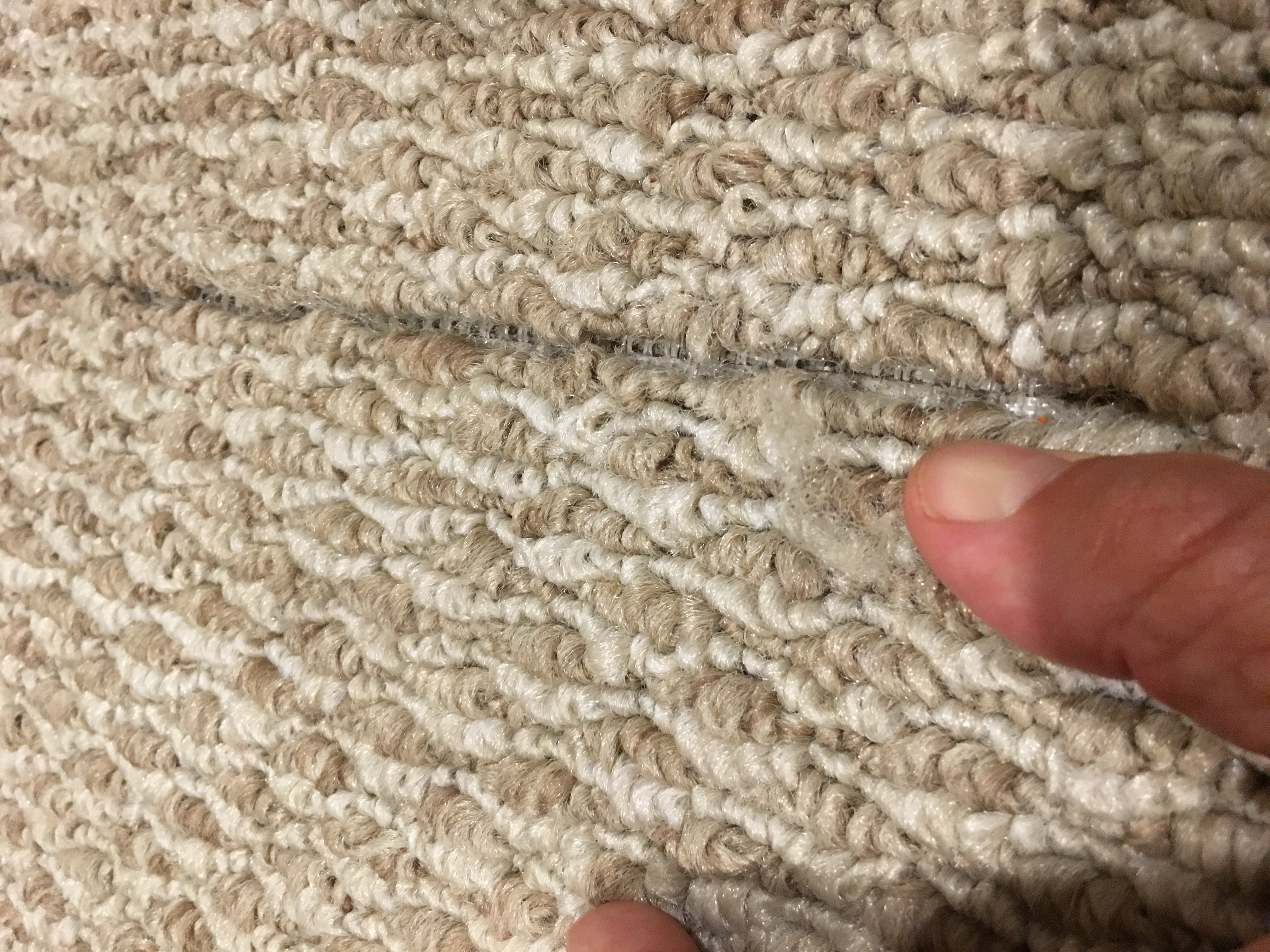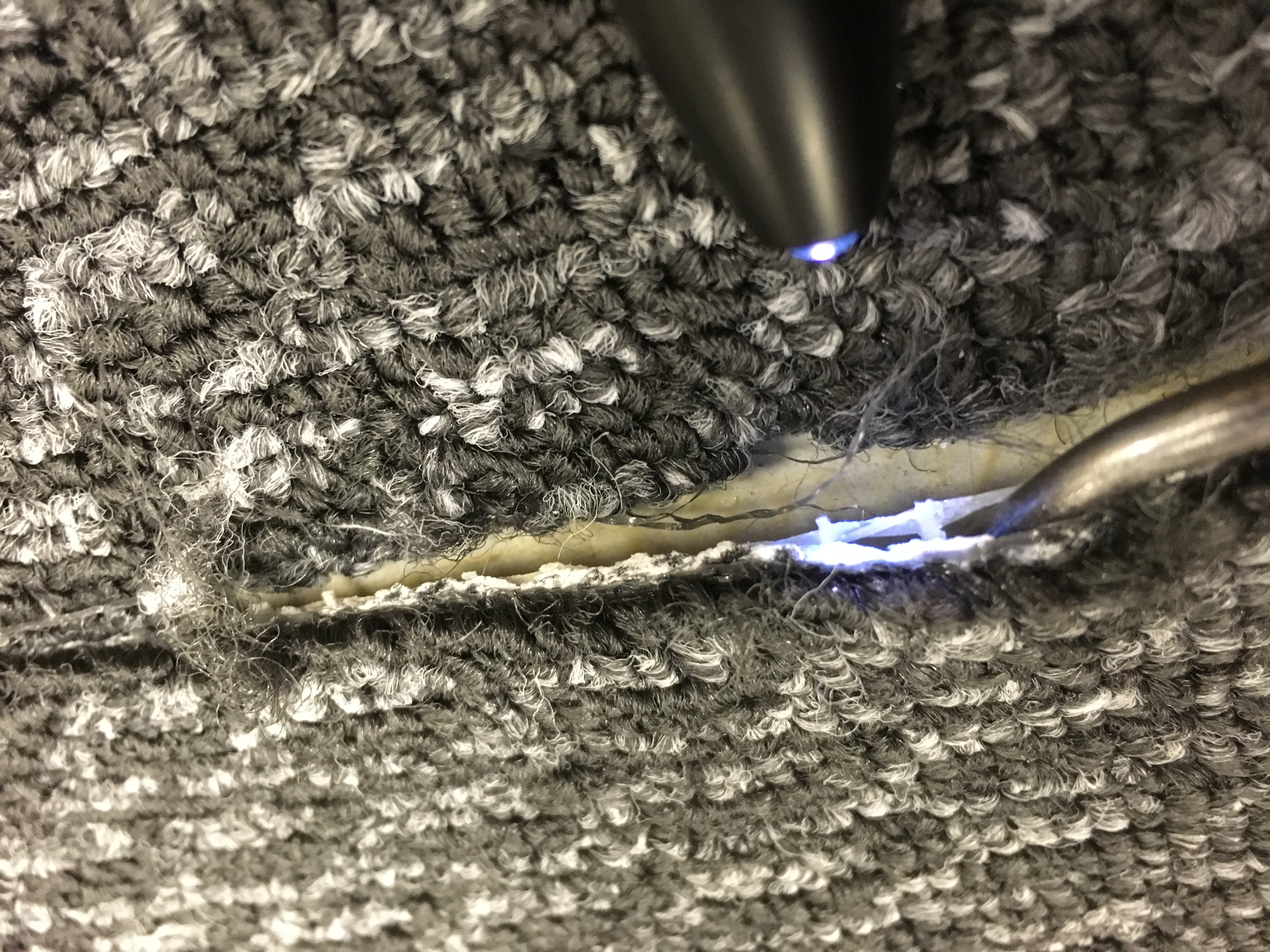Seam sealing is a must for all new broadloom carpet installations.
You may not know, but according to the Carpet and Rug Institutes Commercial and Residential Carpet Installation Guidelines all broadloom seams have to be seam sealed during installation. This installation step protects the freshly cut carpet backing from unraveling at the seams. The backing is a weave. When that weave is cut it creates a weak point if not sealed. 

Yes, you have seen this. You or the night time facility service provider vacuum over a seam and a carpet yarn gets tangled up in a vacuum brush, often leaving a very obvious missing row of loops or tufts. The thing is, whether this is a direct glue down or stretch in over pad, this should not have happened if professional seam sealing had been done by the installer in the first place.
Often people think that a good seam is one that is invisible. Not necessary true. Most seams are visible however the bigger the loops, the heavier the carpet density and/or the longer the carpet pile is, the easier it is to hide the seam. Sometimes patterns, high/low loops/tufts creating texture or long runs of carpet can make it hard to hide seams.
With any seaming method, according to the Carpet & Rug Institute, a properly constructed seam:
- has cleanly trimmed edges properly secured with edge/seam sealer
- has tightly abutted edges without gaps or overlaps
- maintains reasonable pattern match where applicable
- will not be invisible
For do it yourself installers seam sealer can be found at all places where carpet is sold. Many seam sealers contain tracers that can be detected using a black light. Save yourself from future carpet performance failures by making sure seam sealing is performed during your next installation. Call ECO Interior Maintenance for repairs.
